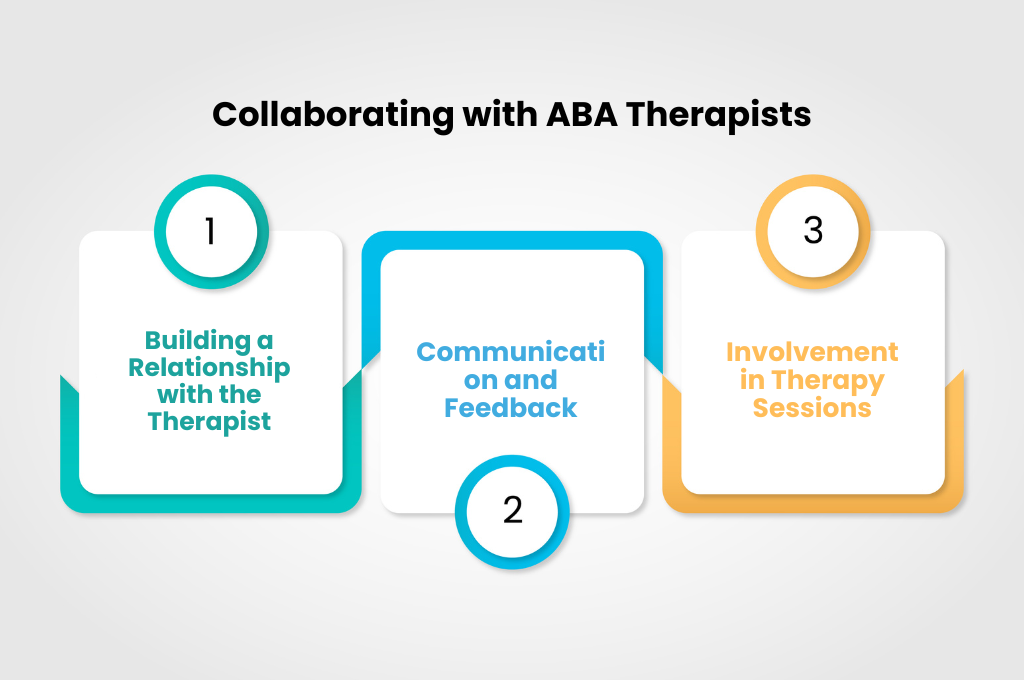ABA Secrets Unveiled: Parents Handbook to Mastering Therapy Prep
ABA TherapyJuly 17, 2025

ABA Therapy Basics
Embarking on the journey of Applied Behavior Analysis (ABA) therapy can be transformative for individuals with Autism Spectrum Disorder (ASD). Understanding the fundamentals of ABA therapy and recognizing its significance in the lives of those with autism are essential for maximizing the benefits of this evidence-based intervention.
Understanding ABA Therapy
ABA therapy is a structured approach that focuses on encouraging positive behaviors and reducing unwanted behaviors by breaking down complex tasks into smaller, more manageable steps. Through the use of behavior analysis techniques, therapists identify patterns and triggers to develop tailored intervention plans that promote skill development and independence.
Key Components of ABA Therapy:
- Behavior Modification: Utilizing positive reinforcement to encourage desired behaviors and discourage challenging behaviors.
- Data Collection: Tracking progress and analyzing data to measure the effectiveness of interventions.
- Individualized Plans: Tailoring interventions to meet the unique needs and abilities of each individual.
Importance of ABA Therapy for Individuals with Autism
For individuals with autism, ABA therapy serves as a foundational tool for enhancing social, communication, and daily living skills. The structured and systematic nature of ABA therapy allows for targeted interventions that address specific challenges faced by individuals with autism.
Benefits of ABA Therapy for Individuals with Autism:
Benefits
Description
Improved Social Skills
Enhancing interaction, communication, and relationship-building abilities.
Behavior Management
Addressing challenging behaviors and promoting positive alternatives.
Skill Development
Fostering the acquisition of new skills in various areas, such as academics and daily living tasks.
By providing a structured and supportive environment, ABA therapy empowers individuals with autism to reach their full potential and navigate the complexities of daily life with increased confidence and independence. To explore additional strategies and approaches for supporting individuals with autism, consider reading our article on using video modeling to enhance social skills in autism.
Parent's Guide to Preparing for ABA Therapy
For parents embarking on the journey of preparing for an ABA therapy session, understanding how to set the right expectations, create a supportive environment, and establish a routine can significantly enhance the effectiveness of the therapy for their child with autism.
Setting Expectations
Setting clear and realistic expectations is key to the success of ABA therapy. Parents should have open and honest discussions with the therapy team to understand the goals, methods, and anticipated outcomes of the sessions. It's essential to recognize that progress may vary for each child and that consistency and patience are crucial factors in achieving positive results.
Creating a Supportive Environment
Creating a supportive environment at home plays a vital role in complementing the efforts of ABA therapy. This involves fostering a safe and nurturing space where the child feels comfortable and secure. Providing ample encouragement, praise, and reinforcement for their efforts during therapy sessions can help boost their confidence and motivation.
Establishing a Routine
Consistency is paramount when it comes to ABA therapy. Establishing a structured routine that includes designated times for therapy sessions, breaks, meals, and other activities can help create a sense of predictability and stability for the child. Parents should work closely with the therapy team to integrate therapy goals and strategies seamlessly into the child's daily schedule.
By setting clear expectations, creating a supportive environment, and establishing a consistent routine, parents can proactively prepare for ABA therapy and ensure that their child receives the necessary support and guidance throughout the therapy process. Effective collaboration between parents, therapists, and other caregivers is essential in maximizing the benefits of ABA therapy for individuals with autism.
Collaborating with ABA Therapists

Establishing a positive and effective relationship with an ABA therapist is instrumental in maximizing the benefits of therapy for individuals with autism. This section focuses on three key aspects of collaboration: building a relationship with the therapist, communication and feedback, and involvement in therapy sessions.
Building a Relationship with the Therapist
Developing a strong rapport with the ABA therapist is essential for creating a supportive and conducive therapy environment. Building trust and mutual respect enables open communication and fosters a partnership centered on the well-being and progress of the individual undergoing therapy.
It's crucial for parents or caregivers to actively participate in therapy sessions, ask questions, and provide valuable insights about the individual's behavior and progress. By working collaboratively with the therapist, you can ensure that the therapy plan is tailored to address specific needs and goals. For more information on the importance of parental involvement in ABA therapy, refer to our article on how to effectively collaborate with schools for ABA support.
Communication and Feedback
Effective communication is the cornerstone of a successful ABA therapy program. Regular and open communication with the therapist allows for the exchange of valuable information, updates on progress, and adjustments to the therapy plan as needed. It's essential to share observations, concerns, and successes with the therapist to ensure a comprehensive and personalized approach to therapy.
Providing constructive feedback to the therapist enables them to tailor interventions and strategies according to the individual's responses and needs. Additionally, receiving feedback from the therapist on your involvement and the individual's progress is crucial for continuous improvement and optimization of the therapy experience.
Involvement in Therapy Sessions
Active participation in therapy sessions not only enhances the effectiveness of the interventions but also strengthens the bond between the individual, the therapist, and the parents or caregivers. Being present during sessions allows you to observe techniques, learn strategies for implementation at home, and actively engage in the therapy process.
Parents or caregivers play a vital role in generalizing skills learned during therapy to everyday situations. By actively participating in therapy sessions and practicing strategies at home, you support the individual's progress and promote consistency in their learning and development.
Collaborating closely with the ABA therapist, maintaining open lines of communication, and actively engaging in therapy sessions are key components of a successful ABA therapy journey. By working together as a team, you can empower the individual with autism to achieve their full potential and thrive in all areas of life.
Maximizing the Benefits of ABA Therapy
To fully optimize the advantages of Applied Behavior Analysis (ABA) therapy for individuals with autism, several key strategies can be implemented. Consistency in therapy sessions, recognizing and celebrating achievements, and maintaining a commitment to continuous learning and adaptation are crucial components in maximizing the benefits of ABA therapy.
Consistency is Key
Consistency in the application of ABA techniques and strategies is fundamental for achieving positive outcomes in therapy. Ensuring that interventions are consistently implemented in various settings and situations helps individuals with autism generalize and retain the skills learned during therapy sessions. A structured and predictable environment promotes learning and social skills development, enhancing the overall effectiveness of ABA therapy.
Consistency Strategies
- Establishing a consistent daily routine
- Using consistent verbal and non-verbal prompts
- Implementing consistent reinforcement strategies
By maintaining consistency in both the delivery of therapy and daily routines, individuals with autism can experience enhanced progress and skill acquisition.
Celebrating Achievements
Acknowledging and celebrating the achievements and milestones reached during ABA therapy sessions is essential for fostering motivation and reinforcing positive behaviors. Celebrating successes, no matter how small, helps to boost self-esteem and encourages continued participation and effort in therapy activities.
Ways to Celebrate Achievements
- Offering verbal praise and encouragement
- Providing tangible rewards or incentives
- Creating a visual progress chart to track accomplishments
Recognizing progress and accomplishments serves as a powerful motivator for individuals with autism, promoting engagement and active participation in therapy sessions.
Continuous Learning and Adaptation
ABA therapy is a dynamic and evolving process that requires ongoing learning and adaptation to meet the changing needs of individuals with autism. Continuous learning involves staying informed about the latest research and evidence-based practices in ABA therapy, as well as exploring new techniques and interventions that may benefit the individual.
Adaptation is key to tailoring therapy approaches to the unique strengths and challenges of each individual with autism. Flexibility in adjusting strategies based on progress and feedback ensures the relevance and effectiveness of ABA interventions over time.
By embracing a commitment to continuous learning and adaptation, parents and caregivers can support the success of ABA therapy and promote positive outcomes for individuals with autism. For further insights on enhancing ABA therapy techniques, consider exploring our article on using mind mapping techniques in ABA therapy to enhance learning.
